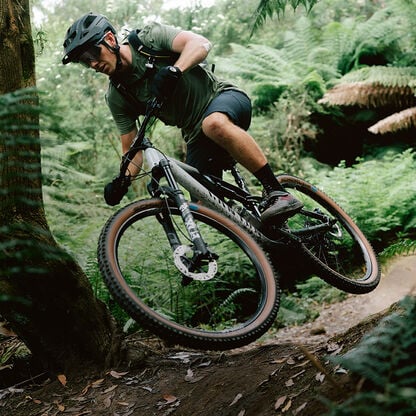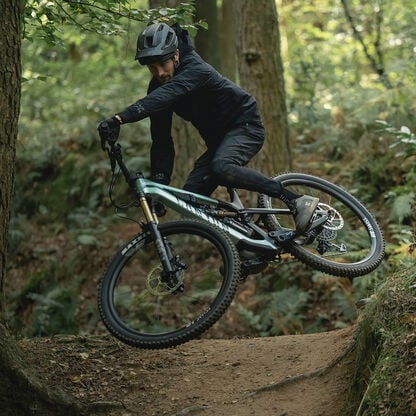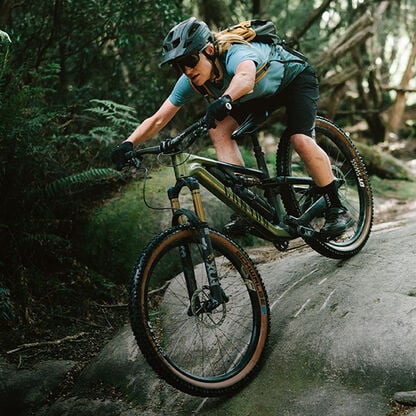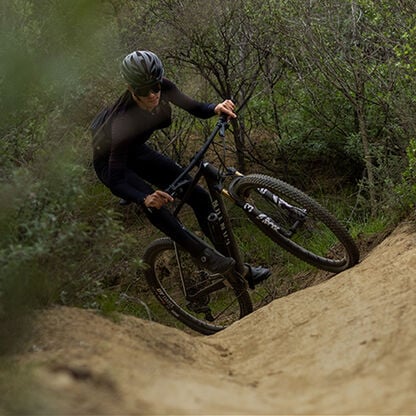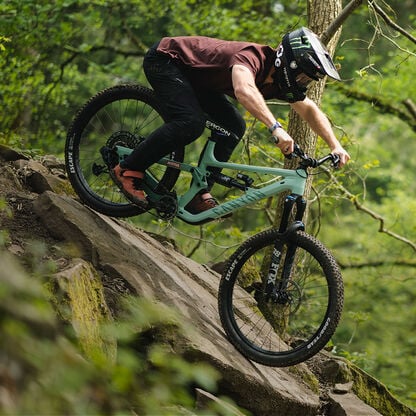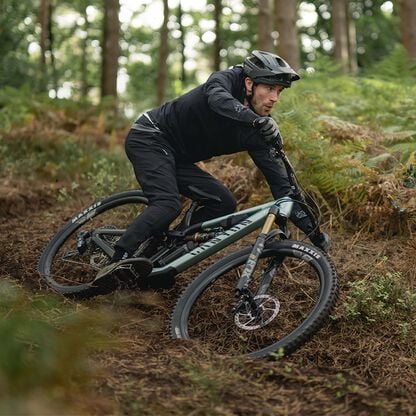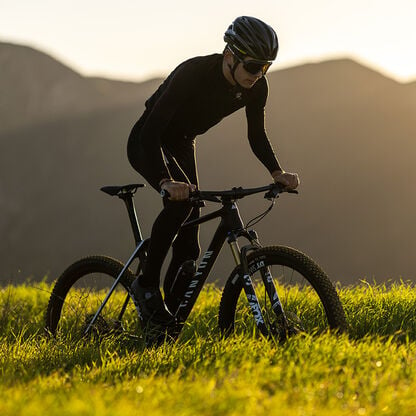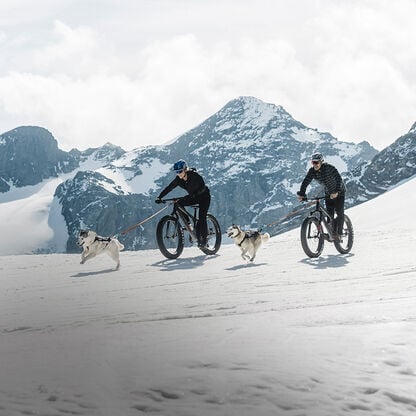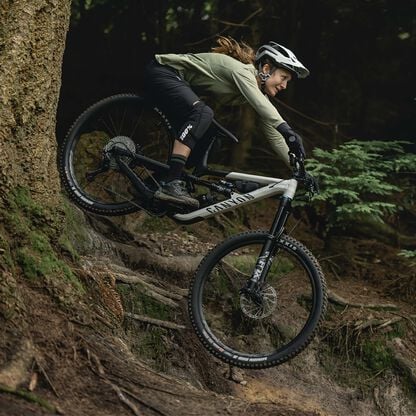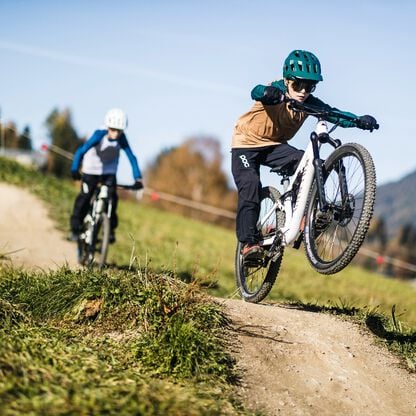Trail bike vs mountain bike: which is best?
Is a trail bike right for you? Find out more about the differences between a trail bike compared to other types of mountain bikes.

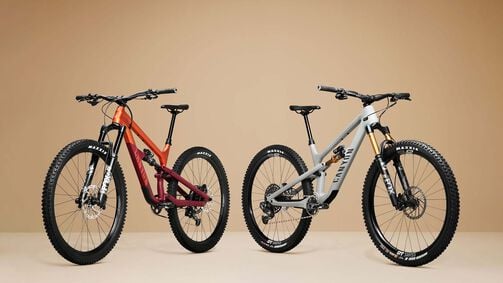
Trail bikes are often described as a kind of do-it-all mountain bike. They're great for climbing as well as tackling tame and technical terrain downhill.
Keeping reading to find out all the pros and cons of the different types of mountain bikes. Afterwards, we'll dive into detail about the benefits and features of trail bikes. At the end, you should have a solid understanding of trail bikes vs other mountain bike ride styles.
Ready to go mountain biking?
Contents
What is the difference between a trail bike and a mountain bike?
The main differences between trail bikes and other mountain bikes center around suspension travel, head tube angle, tires and certain components on the bike.
When people talk about mountain bikes, they’re often referring to cross-country bikes. There are however many different types of mountain bikes. In the next section, we explain the differences between them all.
Types of MTBs
Trail
Trail bikes are mid-travel, full-suspension bikes. They're capable on just about everything you'll encounter on an off-road route. Think rock gardens, forest paths, jumps and so much more. As the all-rounder of mountain bikes, there's not much a trail bike can't do.
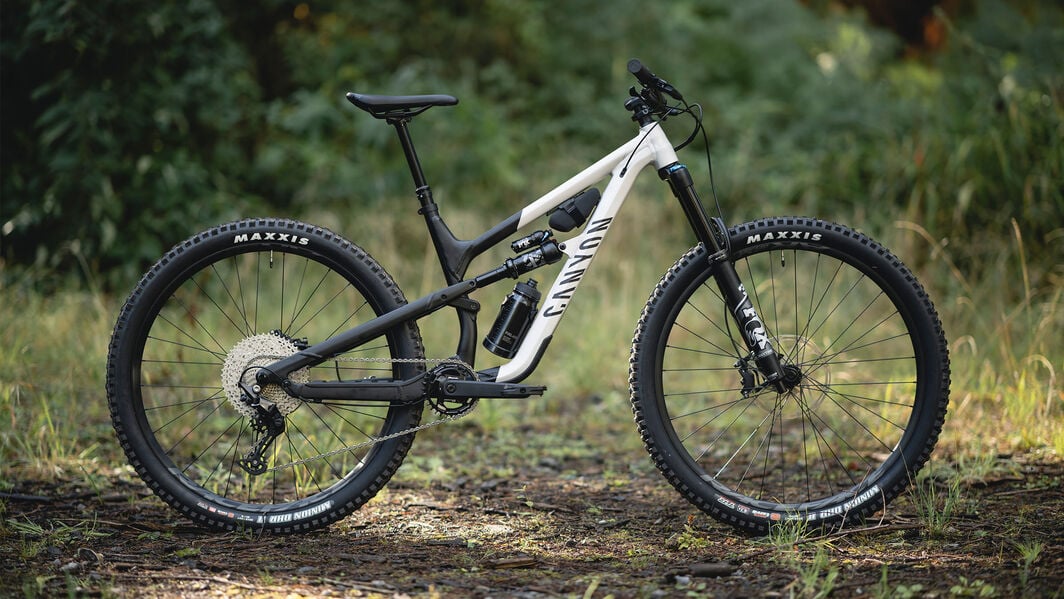
Enduro
Enduro bikes (sometimes referred to as All-Mountain bikes) are designed to be efficient climbers and descenders. Enduro racing involves timed transfers between descents, so it's important the riders aren't exhausted by the time they get to the top.
Downhill
Not interested in pedaling up hills? Downhill bikes do exactly what they say on the tin. Get on the uplift and channel your energy and skill into the descent. The bike has enough travel to soak up some really gnarly trails, so you know you can push yourself to the limit.
Cross-country
Speed and distance are both possible on a cross-country bike. They're all about performance and efficiency with their lightweight frames. Take part in some XC or marathon events on board a cross-country mountain bike.
Dirt Jump
Jumps and tricks more your bag? Then a dirt jump bike is the way forward (and up!). They're pocket rockets that love to get airborne.
Fat bikes
Slow and steady wins the race. If you're riding in snowy or sandy conditions, a fat bike is the tool you need. Huge tyres, solid geometry and easy gearing make child's play out of extreme weather.
A detailed look at how trail bikes differ to other MTBs
Trail bike suspension
One of the easiest differences to spot is suspension travel. Crucially, most trail bikes are full-suspension bikes meaning they possess a suspension fork and rear suspension.
As we mentioned earlier, trail bikes are classified as mid-travel mountain bikes. This means they typically have 130 mm-160 mm of travel. By comparison, cross country bikes are classified as short-travel, while enduro and downhill bikes are long-travel.
This suspension setup is perfect for smoothing the trail beneath your tires. When you roll over obstacles, land drops or take on steep descents, the suspension recoils to give a more comfortable ride.
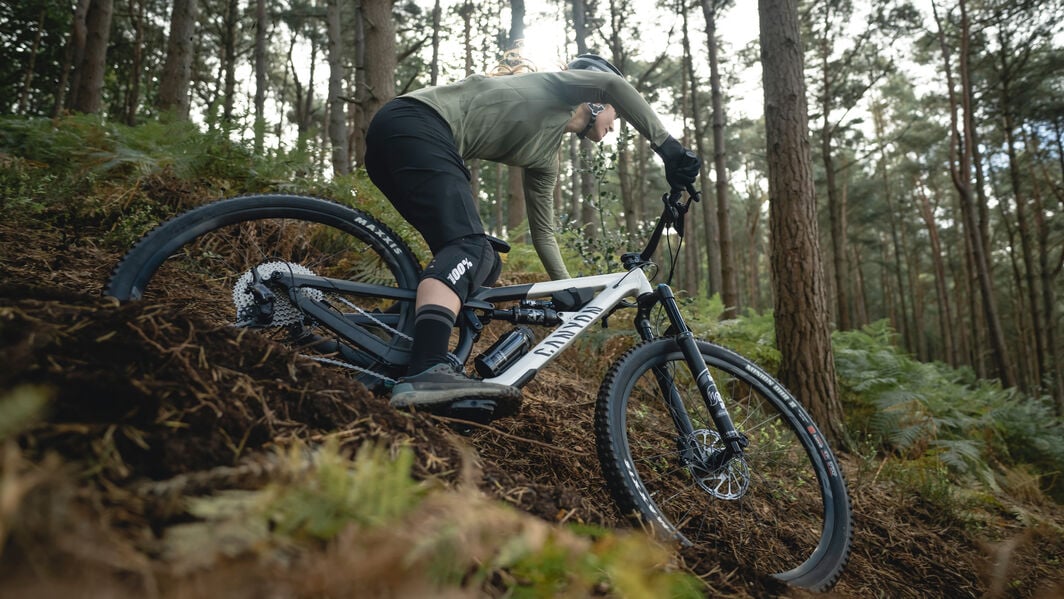
Trail geometry
Suspension travel is closely linked to head tube angle. More suspension travel means a slacker head tube angle.
A steep head tube angle (68 to 70 degrees seen on cross country bikes) improves handling but makes descending twitchy. A slacker head tube angle (64 to 66 degrees as on trail bikes) gives a longer wheelbase therefore better stability when riding downhill on rough terrain.
Check out our in-depth read about mountain bike frame geometry if you'd like to know more.
Trail bike frame
To the untrained eye, a trail mountain bike looks like a mountain bike should: two wheels, flat handlebar, some pedals and a triangular frame. But there are some subtle differences.
Trail bikes are available with carbon fiber or aluminum frames. Carbon fiber is a premium product offering unparalleled stiffness. Aluminum is more affordable, durable and recyclable.
Many entry-level bikes (including trail bikes) tend to have aluminum frames which helps keep the sport more accessible.
One of the greatest advantages of carbon fiber is low weight. For this reason, cross-country bikes are commonly specced with carbon frames. However, this benefit is somewhat negated after adding long travel suspension and larger wheels. That said, it looks pretty sweet and it's incredibly durable.
What is a trail bike best for?
Trail bikes can ride just about anything. Whether you want to do laps of your local bike park, test your skill on technical singletrack or rocky descents, trail mountain bikes can do it all. Even if you're not sure what you want to ride, you really can't go wrong with a trail bike.
Sturdy 27.5 inch or 29 inch wheels with big tires make crushing through the trails easy. Large brake rotors help you control your speed. A wide handlebar also helps with stability and handling when the going gets rough.
What is an MTB best for?
Other MTBs have specialities such as enduro bikes and jump bikes. If you specifically know where and how you'll ride, you can get the best tool for the job.
A hardtail trail bike is a good introduction to the sport and will help you find out what you like best about mountain biking.
Discover our Mountain Bikes
Did this article help?
Thank you for your feedback
-
 About the author
About the authorGrace Lambert-Smith
Meet Grace, our SEO Copywriter who calls the Peak District National Park home. An experienced long-distance road cyclist, she's now focused on mastering the art of gravel riding and mountain biking. With a passion for telling cycling stories through the written word, Grace is always ready to share her experiences with others.
